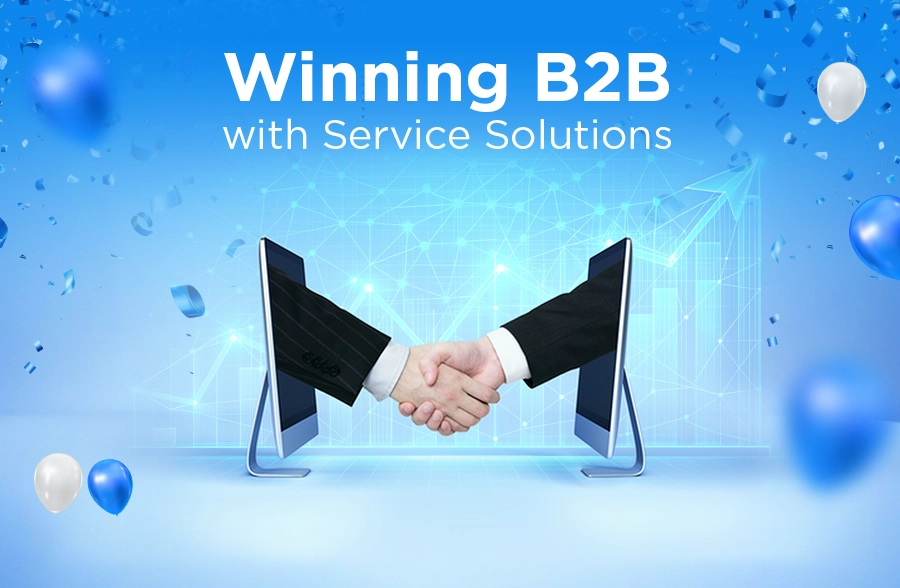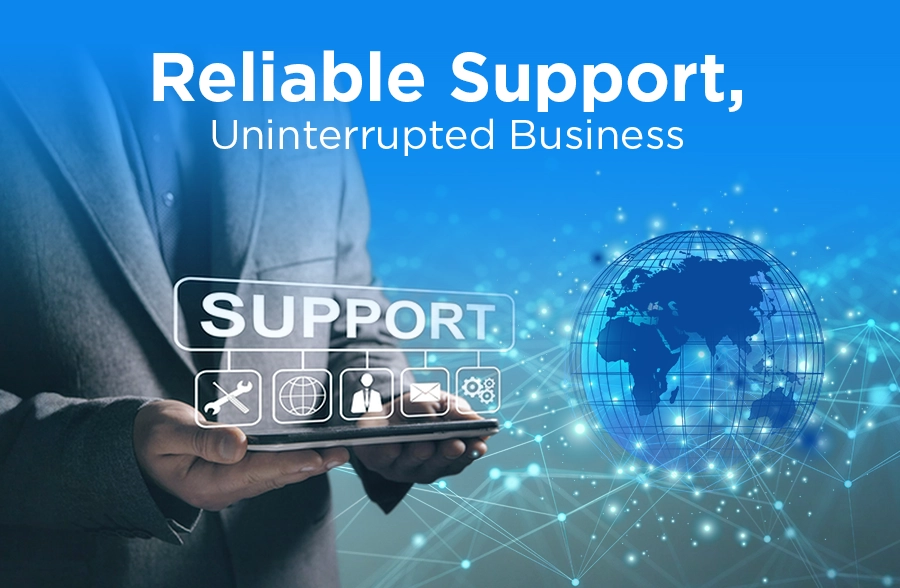Schedule a FREE call with our outsourcing expert now and get a precise quotation that meets your requirements. Don't wait - get started today!
Customer service is no longer just about answering calls. It’s about creating seamless, personalized experiences that keep customers engaged. As Bill Gates once said, “Your most unhappy customers are your greatest source of learning.” Every interaction matters, and businesses must ensure customers feel heard and valued—no matter how they reach out.
This is where omnichannel contact centers come in. They bridge the gap between businesses and customers by connecting all communication channels into one unified system. Whether a customer reaches out through phone calls, live chats, or social media, an omnichannel approach ensures consistency and convenience. No more repeating concerns or switching between disconnected platforms.
For small and medium-sized enterprises (SMEs), adopting an omnichannel strategy isn’t just about keeping up with larger competitors—it’s about building stronger customer relationships. A smooth and hassle-free experience makes customers more likely to stay loyal and recommend your business to others.
Let’s explore how this approach transforms customer interactions and helps businesses thrive.
Why Businesses Are Moving from Multichannel to Omnichannel?
Businesses used to rely on a multichannel approach, where customers could interact through different platforms like phone, email, and social media. However, these channels often worked separately, leading to inconsistent experiences. Customers might have to repeat themselves when switching between platforms, causing frustration and inefficiency.
What Makes an Omnichannel Contact Center Different?
An omnichannel contact center is more than just a call center. It’s a unified system that connects all customer touchpoints. Whether it’s through live chats, emails, or social media, every interaction is linked.
1. Seamless Customer Journey
Customers don’t want to repeat their issues. With an omnichannel strategy, their history is accessible across all channels. This means smoother transitions between live agents and support teams. For example, a customer can start a conversation on live chat and continue it over email without repeating themselves. This saves time and reduces frustration.
2. Real-Time Communication
Live chats and instant messaging are now essential. An omnichannel cloud contact center ensures real-time responses. This keeps customers engaged and satisfied. Quick replies show customers that their time is valued, which can lead to higher satisfaction rates.
3. Centralized Data Management
All customer data is stored in one place. This helps support teams provide faster and more accurate solutions. For instance, if a customer calls after sending an email, the agent already knows the issue. This eliminates the need for customers to explain their problems multiple times.
4. Flexibility for Customers
Customers choose how they want to communicate. Whether it’s a phone call or a message, the experience remains consistent. This flexibility makes it easier for customers to reach out, increasing the chances of resolving their issues quickly.
Key Features of Omnichannel Contact Centers
Omnichannel contact centers offer several features that enhance customer interactions. These features ensure seamless communication, improve efficiency and boost customer satisfaction. Here’s how each one contributes to a better customer experience:
-
Unified Customer Profiles
All customer interactions are stored in one place, allowing support teams to access complete histories and provide personalized service. This eliminates the need for customers to repeat their concerns when switching between channels. With a detailed history available, live agents can resolve issues faster and tailor their responses to individual needs.
-
Consistent Messaging
Customers receive the same information and quality of service whether they contact the company via phone, email, or social media. A well-integrated system ensures that responses remain accurate and aligned with company policies. This consistency builds trust and prevents confusion, making it easier for customers to get the help they need.
-
Real-Time Updates
Any changes or updates are reflected across all channels instantly, ensuring customers are always informed. Real-time updates prevent miscommunication, whether it’s a product update, order status, or service outage notification. This feature also allows businesses to respond quickly to customer concerns, minimizing delays and frustration.

How Omnichannel Contact Centers Empower SMEs
SMEs often face resource limitations. An omnichannel approach can level the playing field. Here’s how:
1. Improved Workforce Management
Efficiently managing live agents is easier with omnichannel contact center software. It helps distribute workloads and monitor performance in real-time. This ensures that no agent is overwhelmed, leading to better service quality.
2. Enhanced Customer Retention
A seamless customer journey builds trust. Happy customers are more likely to stay loyal to your brand. When customers feel heard and valued, they are more likely to return and recommend your business to others.
3. Cost-Effective Solutions
Cloud-based systems reduce the need for heavy infrastructure. This makes it a practical choice for SMEs. You can scale up or down based on your needs without significant upfront costs.
4. Data-Driven Decisions
Access to customer insights helps SMEs make informed decisions. This leads to better strategies and improved outcomes. For example, knowing which channels your customers prefer can help you allocate resources more effectively.
Implementing Omnichannel Contact Center Software
The process can be straightforward for SMEs looking to implement an omnichannel contact center with the right approach. Here are the key steps to get started:
Step 1: Assess Current Channels
Start by identifying which communication channels your customers use most frequently. Are they more active on live chats, emails, or social media? Understanding this helps you prioritize which channels to integrate first. This step ensures you focus on what matters most to your customers, smoothing the transition.
Step 2: Choose the Right Software
Select omnichannel contact center software that integrates well with your existing systems and meets your business needs. Look for features like real-time analytics, AI routing, and cloud-based scalability. The right software will make it easier to manage interactions and provide a seamless experience for both your team and your customers.
Step 3: Train Support Teams
Ensure your support teams are trained to handle interactions across all channels effectively. This includes teaching them how to use the new software and how to maintain a consistent tone and approach. Well-trained teams can resolve issues faster and provide a more personalized experience, which boosts customer satisfaction.
Step 4: Monitor and Optimize
Regularly review performance metrics to identify areas for improvement and optimize the customer experience. Use data from the software to track response times, resolution rates, and customer feedback. This ongoing process helps you stay ahead of customer needs and ensures your omnichannel strategy continues to deliver results.
By following these steps, SMEs can successfully implement an omnichannel contact center that enhances customer experience and drives business growth.
The Role of Technology in Omnichannel Success
Technology is the backbone of any omnichannel strategy. It ensures everything runs smoothly behind the scenes.
1. Omnichannel Contact Center Software
This software integrates all communication channels. It ensures no customer query falls through the cracks. For example, it can route a social media message to the right agent instantly.
2. AI and Automation
AI helps route queries to the right live agents. Automation handles repetitive tasks, freeing up time for more complex issues. This means faster response times and happier customers.
3. Cloud-Based Systems
An omnichannel cloud contact center offers scalability. It grows with your business without requiring major upgrades. This is especially useful for SMEs that need to adapt quickly to changing demands.
4. Analytics and Reporting
Detailed reports help identify trends and areas for improvement. This ensures continuous growth and better customer experiences. For instance, you can track which channels are most effective and focus your efforts there.
Why Omnichannel is the Future of Customer Experience
Customers expect more than just quick responses. They want personalized, consistent interactions. An omnichannel approach delivers just that.
Did you know? 87% of customers think brands need to put more effort into providing a seamless experience. This is where omnichannel contact centers shine.
1. Personalized Interactions
Every customer wants to feel valued, not just another number in the system. An omnichannel contact center keeps track of past conversations, preferences, and concerns across all platforms. This means customers don’t have to repeat themselves, and businesses can anticipate their needs. A personal touch like this builds trust and keeps customers engaged.
2. Faster Resolutions
Speed matters. When customers reach out, they want quick and accurate solutions. With all their data stored in one place, live agents can immediately see past interactions, purchase history, and previous issues. No more frustrating back-and-forths or long hold times. Faster resolutions lead to higher satisfaction, which increases the chances of positive reviews and referrals.
3. Stronger Brand Loyalty
A seamless and stress-free experience encourages customers to stick with a brand. When businesses consistently provide support across different channels, customers feel more connected. They’re also more likely to recommend the brand to friends and family. A well-executed omnichannel approach doesn’t just retain customers—it turns them into brand advocates.
4. Adaptability to Trends
Customer needs change over time. One year, they prefer emails. The next, they rely on live chats or social media messaging. An omnichannel strategy ensures businesses can quickly adapt to these shifts. By offering support on multiple platforms and integrating new technologies, companies stay relevant and ahead of competitors. Being adaptable means meeting customer expectations—no matter how they evolve.
Overcoming Common Challenges
While implementing an omnichannel contact center can transform customer interactions, SMEs may face a few hurdles along the way. Understanding these challenges is the first step toward finding practical solutions.
-
Resource Constraints
Many SMEs operate with limited budgets and small teams. Adding multiple communication channels might seem overwhelming, especially when there aren’t enough people to manage them efficiently. The key is to prioritize the most-used channels and use automation tools to handle repetitive tasks. Features like chatbots, self-service portals, and AI-driven responses can help businesses offer seamless support without stretching their resources too thin.
-
Technology Integration
Switching to an omnichannel system often means adopting new software. But if it doesn’t work well with existing tools like CRMs, email platforms, or phone systems, it can create more problems than it solves. To avoid disruptions, businesses should look for omnichannel contact center software that easily integrates with their current setup. Partnering with a provider that offers customized solutions and expert support can make the transition smoother.
-
Maintaining Consistency
Customers expect the same level of service whether they contact a business through live chats, phone calls, or social media. However, keeping responses aligned across multiple platforms can be tricky, especially with different team members handling inquiries. The solution? Clear guidelines, well-trained support teams, and centralized data. All agents can provide personalized, consistent assistance whenever they have access to the same customer history.
Overcoming these challenges takes careful planning, but the benefits of an omnichannel approach far outweigh the difficulties. With the right tools and strategies, SMEs can offer top-tier customer service without breaking the bank.
Smarter Conversations, Stronger Connections
The way businesses connect with customers is evolving. Omnichannel contact centers ensure every interaction is seamless, no matter the platform. Customers expect quick responses, personalized service, and consistent support—and businesses that deliver will stand out.
Book your FREE 60-minute business consultation today! Let’s explore how to enhance your customer experience—NO COMMITMENTS, just results-driven insights!
At Magellan Solutions, we offer omnichannel cloud contact center solutions tailored for SMEs. From workforce management to ensuring a smooth customer journey, we help businesses provide exceptional support. Let’s build a strategy that works for you.
















